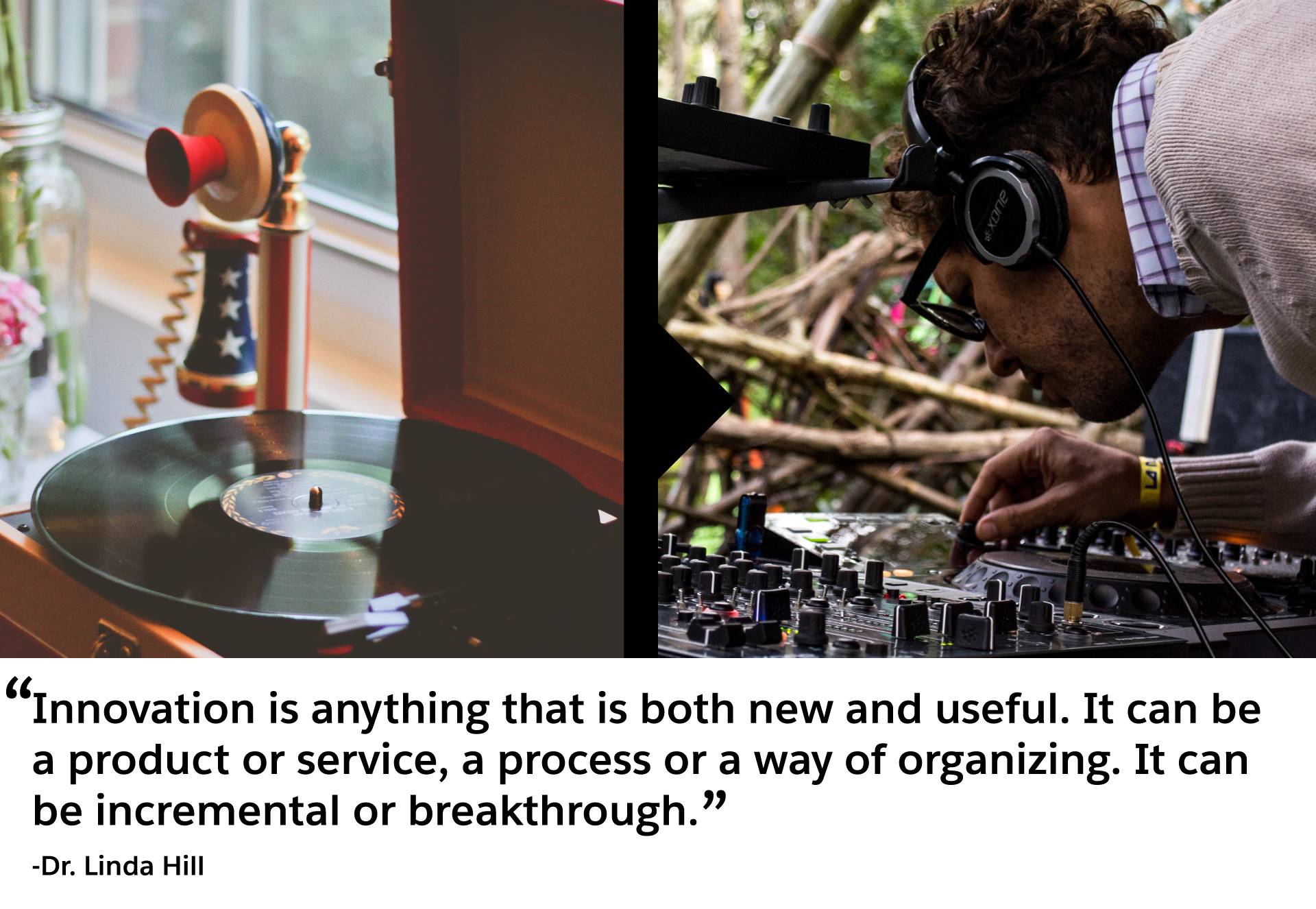Get in the Zone
Learning Objectives
After completing this unit, you’ll be able to:
- Summarize the definition of innovation.
- Explain the difference between incremental and breakthrough innovation.
- Describe the concept behind the 10 types of innovation.
What Is Innovation, Anyway?
We could have written an entire trail on the methods and practices of teaching innovation, but that might put you to sleep. Let’s keep it simple with a crisp, intuitive definition from Dr. Linda Hill, management professor at Harvard Business School. In her 2014 TED Talk, she says, “Innovation is anything that is both new and useful. It can be a product or service, a process, or a way of organizing. It can be incremental or breakthrough.”

What’s the difference between incremental and breakthrough innovation?
- Incremental innovation is a step change—an extension or improvement to something that exists.
- Breakthrough innovation is disruptive. It could mean a disruption of an industry, the introduction of new markets and customers, or invention of a new product or service.
We also like the Doblin Ten Types of Innovation framework, which breaks down innovation into three categories.
- Configuration innovation focuses on the innermost workings of an organization and its business system. In this category, innovation occurs around the profit model, organizational structure, and networks.
- Offering innovation rethinks an organization’s core product or service, focusing on how it’s designed and how it performs.
- Experience innovation focuses on how an organization’s products and services are delivered to its customers. This category is where you evolve the brand and rethink how you engage and deliver to the customer.
What Will You Innovate?
It’s time to focus on you. What needs fixing in your organization? Take a moment to scribble a few high-level problems on a piece of paper. For example:
- Our process for collaborating internally is broken. We’re siloed, and it feels like we’re reinventing the wheel everyday.
- Our customer service process is actually a disservice to our customers with lots of friction.
- Our business growth is plateauing. We need a breakthrough idea if we want to survive.
In the second module, “Innovation Project Definition,” we walk you through a process for sizing up your organization, developing a problem statement, crystallizing a vision for the future, and creating a charter for your project.
If you’ve got a bit of sweat on your brow, don’t worry. You’re not in this process alone. It’s time to recruit your team.